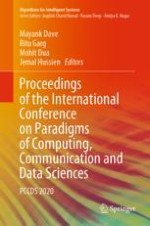2021 | OriginalPaper | Buchkapitel
57. Estimation of Daily Average Global Solar Radiance Using Ensemble Models: A Case Study of Bhopal, Madhya Pradesh Meteorological Dataset
verfasst von : Megha Kamble, Sudeshna Ghosh
Erschienen in: Proceedings of the International Conference on Paradigms of Computing, Communication and Data Sciences
Verlag: Springer Singapore
Aktivieren Sie unsere intelligente Suche, um passende Fachinhalte oder Patente zu finden.
Wählen Sie Textabschnitte aus um mit Künstlicher Intelligenz passenden Patente zu finden. powered by
Markieren Sie Textabschnitte, um KI-gestützt weitere passende Inhalte zu finden. powered by
